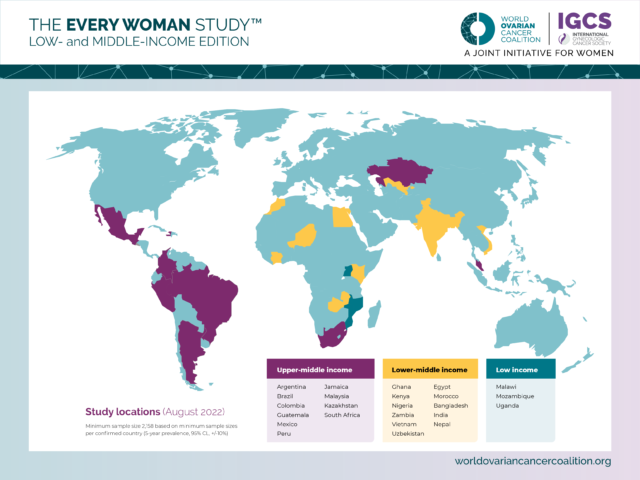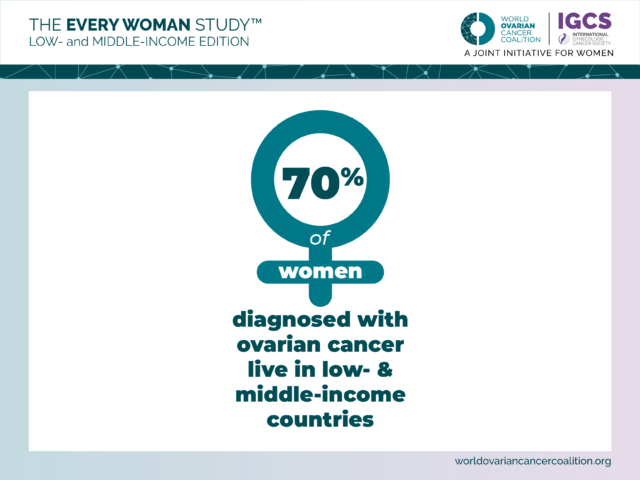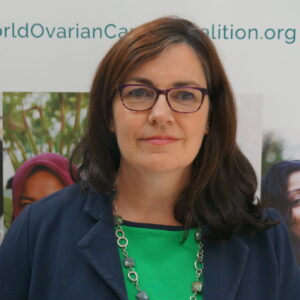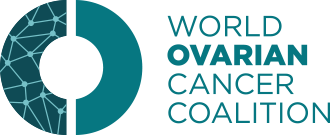The Heart of Cancer Advocacy
By: Frances Reid, Every Woman Study™ Lead & Programme Director
Closing the care gap is, or should be, at the heart of cancer advocacy, no matter the setting or type of cancer. There is always the opportunity to improve, to drive progress forward, ensuring people get the care they need and deserve. At the World Ovarian Cancer Coalition, we firmly believe that it is vital to find where the care gaps are, and to find opportunities that are revealed during that search.
This time last year as World Cancer Day was adopting this theme for the first time, we were getting ready to launch the Every Woman Study™, Low- and Middle-Income Edition with our Strategic Advocacy Partners, the International Gynecologic Cancer Society. The aim of this wide ranging study is to identify the challenges and opportunities to improve survival and quality of life for women with ovarian cancer in these settings. Global incidence is set to increase 40% by 2040, and mortality by 50%, and developing countries will see the greatest increases. We felt it was vital to gather timely data on women’s experiences, so we can articulate the issues and opportunities at hand and unite local communities behind prioritised action, backed by evidence.

One year later, data collection, which takes place via hospital clinics in our 24 Low- and Middle-Income countries (LMICs) in 31 languages, is underway. Over 400 responses from our target of 2,000 women have already been recorded, with analysis of our Country Lead Clinician interviews being prepared for journal submissions. The overwhelming energy and collaborative approach from our partners on the ground show they agree that documenting the experiences of women with ovarian cancer in their country is the first step to improving care. Whilst we know that a significant number of women never get a diagnosis or sadly they disappear after diagnosis, the demographic factors we are collecting are revealing diverse communities. So far:
- 12.8% travel more than 5 hours to get to the hospital, for 3% it takes more than 24 hours
- For 15.8% of women, they either have no formal education, or were only educated to primary school level
- 25.3% report their household income is below average for their country
It is evident that there are significant gaps in the care provision between lower and higher income settings, but even early on, it is interesting to see how this varies not only country by country but also within countries, especially between rural and urban settings. Levels of health literacy and their role in society also impact sharply on women’s ability to access and afford care. Cruelly, it is already clear that standard of care is out of reach for a significant number of women. Above and beyond ovarian cancer specifically, we are seeing that there is still an enormous amount of work to be done by the global cancer community to improve health literacy, improve awareness of the importance and value of medical treatment, and ensure women are not disadvantaged.
Beyond these generic themes the call to action in each country will differ, whether it is to improve access to affordable diagnostics, or tackle affordability and accessibility of treatments on the WHO Essential Medicines List, or to ensure sustainability of supply and quality of treatments. But the foundation for any change will be rooted in better data to support cancer control planning and action in national communities, and for the focus to turn towards what can be done for non-communicable diseases like cancer. It is our aim that each country will not only have a National Cancer Control Plan, but will have one one that mentions ovarian cancer.

70% of women in the world who have ovarian cancer live in LMIC, therefore tackling the inequities that exist in ovarian and other cancers is an important priority. We all have a role as a wider cancer community to step up and work on these issues. The things we learn along the way will also likely impact on care in higher-income countries, as we find out more about the impact of geography, socio-economic factors, and levels of health literacy on patients’ ability to access good quality and affordable care.
As part of our preliminary work for the study, we are updating the World Ovarian Cancer Coalition Atlas to launch March 2023, documenting the current evidence surrounding incidence, mortality, survival, treatments, risk factors and access to care. What is encouraging to note for this third edition, is the beginning of a new direction in the literature, one that at last is beginning to think more carefully about inequity, and the importance of having localised relevant data to guide planning, treatment and support.
We hope by this time next year, even more groups will be considering these issues, and, of course, data from our own Study, which closes in June 2023, will be beginning to spotlight and focus on exactly where and how those gaps can be closed.

